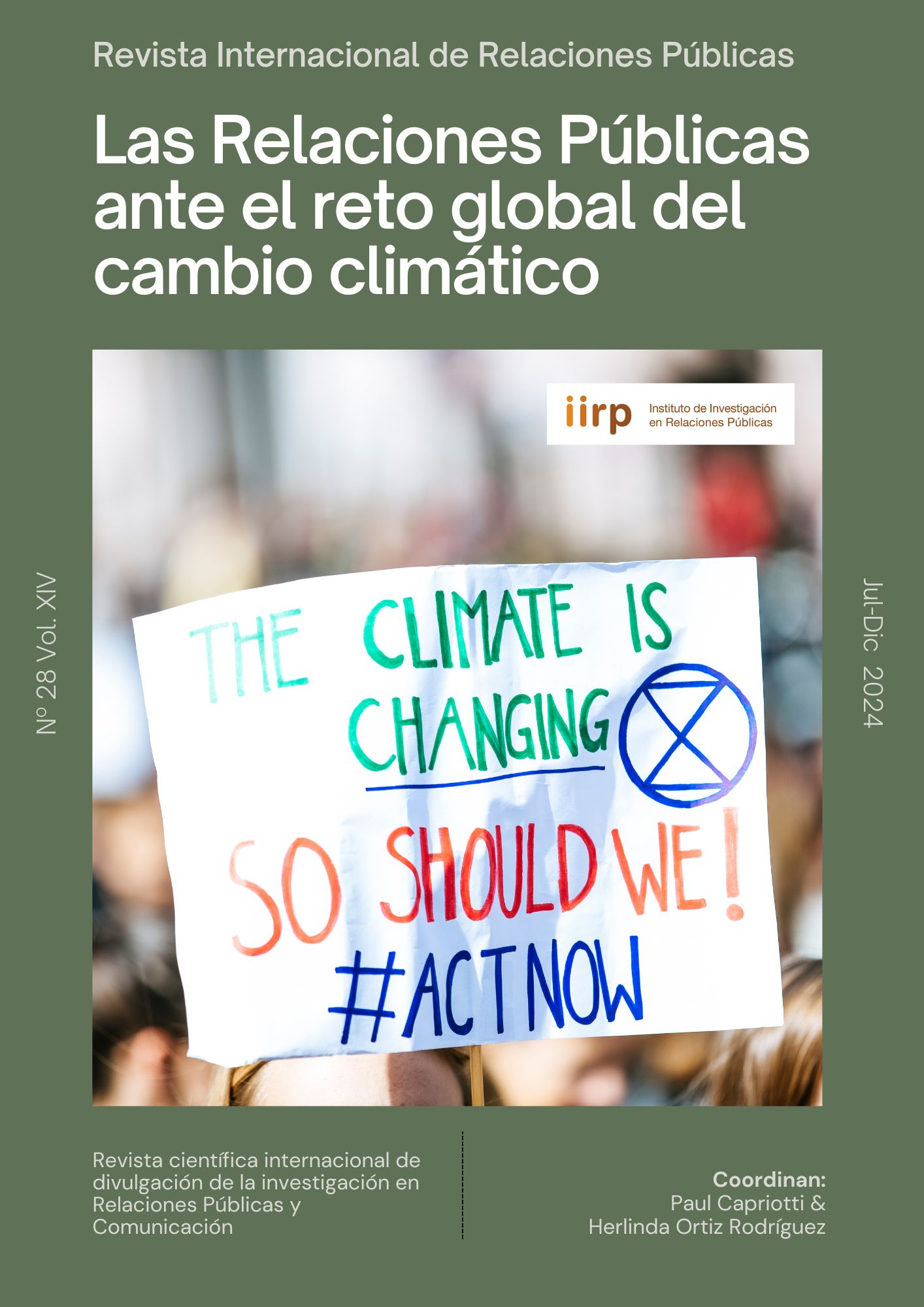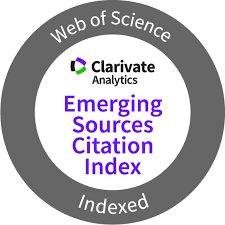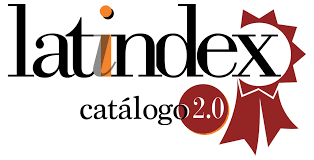The integration of generative Artificial Intelligence in Public Relations practices: a systematic review
DOI:
https://doi.org/10.5783/revrrpp.v14i28.863Keywords:
public relations, generative artificial intelligence, organizational communication, communication practices, ethicsAbstract
The integration of Generative Artificial Intelligence (IAG) into Public Relations practices is an emerging and still poorly understood topic in both academic and professional fields, although it has sparked controversial positions related to the adoption of this technology and its challenges. This innovation reflects the advances of the contemporary market, which demands greater efficiency, creativity, and competitiveness in communication actions. At the same time, the adoption of IAG raises relevant debates, especially due to the ethical and social challenges involved. The use of IAG in the context of Public Relations represents a significant reconfiguration of traditional practices, requiring a revision of established methodologies that have historically relied on manual processes and direct human interactions. The technology offers the possibility of personalizing and automating content creation, which can increase efficiency and improve message targeting. However, this requires professionals in the field to understand the capabilities and limitations of IAG to avoid creating content that may be misinterpreted or lose connection with audiences.
To contribute to advancing this discussion, this article aims to understand how the integration of IAG in Public Relations practices is presented in recent scientific literature. The study is based on the systematic literature review method in the Scopus, Web of Science, and Scielo databases. It was found that the adoption of IAG contributes to activities such as crisis forecasting, report creation, data analysis, and institutional campaigns, but also imposes challenges related to misinformation, privacy, digital literacy, algorithmic biases, prejudice, superficial relationships, and employability.
Additionally, significant impacts on the job market are observed, including the potential reduction of job positions and the need for the requalification of professionals in the field. Given these challenges, it becomes essential for professionals to employ rigorous analyses to assess risks, opportunities, and scenarios, while adopting a critical and humanized approach that respects ethical principles and social responsibility. This is especially important because technologies do not operate neutrally and can amplify existing inequalities and prejudices. In this context, the continuous training of PR professionals, with an emphasis on new technologies and data ethics, becomes fundamental for them to adequately address the challenges posed by IAG. Another crucial aspect identified is that, although the existing literature provides important foundations for the discussion, it is still in its early stages, particularly regarding empirical investigations that explore practical cases of IAG integration. Furthermore, the lack of specific regulations and clear guidelines for the use of this technology in the field of Public Relations limits the advancement of structured solutions for ethical, social, and technical challenges. In conclusion, the integration of IAG into Public Relations practices presents both opportunities and challenges. The balance between innovation, ethics, and social responsibility is key to ensuring that this technology is adopted in a sustainable and effective way. For future research, it is crucial to explore practical cases and promote debates on regulations that guide the responsible integration of IAG, fostering not only the advancement of the field but also strengthening its relevance in the contemporary social and organizational context.
Downloads
References
Alves, M. A. S., & Andrade, O. M. de. (2022). Da “caixa-preta” à “caixa de vidro”: o uso da explainable artificial intelligence (XAI) para reduzir a opacidade e enfrentar o enviesamento em modelos algorítmicos. Direito Público, 18(100). https://doi.org/10.11117/rdp.v18i100.5973
Azreen, Z. A. (2019) Embracing social media: The change and disruption to public relations practices in Malaysia. Jurnal Komunikasi: Malaysian Journal of Communication, 35 (1), 319-337. https://ejournal.ukm.my/mjc/article/view/31956
AWS (2023) O Que é IA Generativa? – Explicação da inteligência artificial. https://aws.amazon.com/pt/what-is/generative-ai/
Bourne, C. (2019). AI cheerleaders: Public relations, neoliberalism, and artificial intelligence. Public Relations Inquiry, 8(2), 109-125. https://doi.org/10.1177/2046147X19835250
Brochado, M. (2023). Inteligência Artificial e ética: um diálogo com Lima Vaz. Kriterion: Revista de Filosofia, 154, 75-98. https://doi.org/10.1590/0100-512X2023N15404MB
Cruzato, G. A. & Oliveira, M. R. de. (2018). O Desenvolvimento e a Necessidade dos Chatbots na Atualidade. Simpósio de tecnologia. Faculdade de tenologia de Taquaritinga, São Paulo, Brasil.
Cupertino, R. T. (2023) Impactos da Inteligência Artificial na Economia Mundial [Arquivo em PDF]. Https://repositorio.ufu.br/bitstream/123456789/38432/1/ImpactosIntelig%c3%aanciaArtificial.pdf
Fernández Marcial, V. & Gómes, L. I. E. (2022). Impacto de la Inteligencia Artificial en el comportamiento informacional: elementos para el debate. Revista Bibliotecas. Anales de Investigación, 18 (3), 1-12. https://dialnet.unirioja.es/servlet/articulo?codigo=8741939
Frazon Terra, C. (2024) Inteligência artificial e RP: uso, impactos e discussões. In: Trevisan Fossá, M.I., Frá Fernandes, F; Soares Caporal, G. L. (orgs.). Estratégias de Comunicação e Relações Públicas em Contextos Organizacionais Emergentes. (pp.153-171). Poisson. https://www.poisson.com.br/livros/individuais/Comunicacao_Relacoes_Publicas/Comunicacao_Relacoes_Publicas.pdf
Galloway, C. & Swiatek, L. (2018). Public relations and artificial intelligence: It’s not (just) about robots. Public Relations Review, 44 (5), 734-740. https://doi.org/10.1016/j.pubrev.2018.10.008
GlobalData. (2018). Global generative AI revenue to grow at 80% CAGR over 2022-27, forecasts GlobalData. https://www.globaldata.com/media/technology/global-generative-ai-revenue-grow-80-cagr-2022-27-forecasts-globaldata/
Jakšić, L., Dabo, K., & Volarević, M. (2021). Possibilities of using a “PR stunt” in strategic communication of higher education. Obrazovanje za poduzetništvo - E4E, 11 (1), 110–124. https://doi.org/10.38190/ope.11.1.10
Kaleel, A. & Alomari, M. S. (2024). Integrating Artificial Intelligence in Public Relations and Media: A Bibliometric Analysis of Emerging Trends and Influences. Iraqi Journal for Computer Science and Mathematics, 5 (1), 13-24. https://doi.org/10.52866/ijcsm.2024.05.01.002
Kaspersky (2024). O Que São Bots? - Definição e Explicação. https://www.kaspersky.com.br/resource-center/definitions/what-are-bots.
Kaufman, D. (2022). Desmistificando a Inteligência Artificial. Autêntica.
Kunsch, M. M. K. (2006). Entrevista com Margarida Kunsch - Comunicação organizacional: complexidade e atualidade. Novos Olhares, 18, 23-31. https://doi.org/10.11606/issn.2238-7714.no.2006.51430
Kunsch, M. M. K. (2006). Comunicação organizacional: conceitos e dimensões dos estudos e das práticas In: Marchiori, Marlene. Faces da cultura e da comunicação organizacional. (pp.167-190). Difusão Editora. https://professor.pucgoias.edu.br/SiteDocente/admin/arquivosUpload/11868/material/Comunica%C3%A7%C3%A3o%20organizacional%20conceitos%20e%20dimens%C3%B5es%20dos%20estudos%20e%20das%20pr%C3%A1ticas.pdf
Lattimore, D., Baskin O., Heiman, T., Toth, E. L. & Costa, R. C. (2011). Relações públicas: profissão e prática. Penso. Artemed.
Leite Maykon, S.R. & Gasparotto Angelita, M.S. (2018). Análise SWOT e suas funcionalidades: o autoconhecimento da empresa e sua importância. Revista Interface Tecnológica, 15 (2), 184-195. https://dx.doi.org/10.31510/infa.v15i2.450
Linhares, J., Bridi, J. P. M., & Santos, H. J. dos. (2023). Comunidades virtuais: a construção do Hype de Stranger Things a partir do perfil Netflix Brasil no Twitter. Tempo Da Ciência, 30(59), 74-105. https://e-revista.unioeste.br/index.php/tempodaciencia/article/view/31388
López Estupiñán, A. M. & Peña Mesa, L. (2023). Inteligencia Artificial: el futuro del empleo. Revista Lecciones Vitales, 03 (1), 1-2. https://doi.org/10.18046/rlv.2023.6118
Marques. S.D. & Laipelt, R. do. C. Ferreira. (2023). Pós-realidade e Teoria da Desinformação: inquietações sobre o uso massivo de IA Generativa. 5º Fórum de estudos em informação, sociedade e ciência, Porto Alegre: UFRGS,. https://www.ufrgs.br/feisc/index.php/feisc/article/view/158/106
Mazzuchetti, R., Neto, S. C., Cunha E. D. & Oliveira N. S. de. (2020). A análise pest dos resíduos do coco verde no Brasil. Brazilian Jounal of Development, Curtiba, 6 (7), 46098-46111. https://ojs.brazilianjournals.com.br/ojs/index.php/BRJD/article/view/13096/11012
MediaTalk By J&Cia. (2023). ‘Fascinados e assustados’: pesquisa nos EUA mapeia impressões de profissionais de RP sobre a inteligência artificial. https://mediatalks.uol.com.br/2023/08/31/pesquisas-mapeiam-impressoes-de-profissionais-de-rp-sobre-inteligencia-artificial/
Page, M. J; Joanne, E. M; Patrick, M. B; Isabelle, B; Tammy, C. H; Cynthia, D. M; Larissa, S; Jennifer, M.T; Elie, A. A; Sue, E. B; Roger, C; Julie, G; Jeremy, M.G; Asbjørn, H; Manoj, M. L; Tianjiing, L; Elizabeth, W. L; Evan, M.W; Steve, M; Luke, A. M., … David, M. (2021). The PRISMA 2020 statement: an updated guideline for reporting systematic reviews. Systematic Reviews, 10 (89) (2021). https://doi.org/10.1186/s13643-021-01626-4
Pedro Sebastião, S. (2020). Inteligência Artificial? Não, obrigado. Perceções dos Profissionais de Comunicação e Relações Públicas europeus. Media & Jornalismo, 20(36), 93-108. https://doi.org/10.14195/2183-5462_36_5
Ribeiro Giuliano, R. (2021) Inteligência Artificial Aplicada à Prática Docente na Educação Profissional e Tecnológica. [Dissertação de Mestrado em Educação Tecnológica - Centro Federal de Educação Tecnológica de Minas Gerais, Belo Horizonte].
Ruão, T., Paulo, S., Renata, de F. & Paula, C. R. (2014). Comunicação Organizacional e Relações Públicas, numa travessia conjunta, In: Teresa Ruão, Renata de Freitas, Paula Campos Ribeiro & Paulo Salgado (eds.) Comunicação Organizacional e Relações Públicas: horizontes e perspetivas. Relatório de um debate (pp.16-39). CECS - Centro de Estudos de Comunicação e Sociedade Universidade do Minho. http://www.lasics.uminho.pt/ojs/index.php/cecs_ebooks/issue/view/162/showToc
Sandi, A. Q. (2024). Cenários para um Metaverso Organizacional: entre o real e o virtual. In: Fossá, Maria. I. T; Fernandes, F. F; Soares.G. L. C. (org). Estratégias de Comunicação e Relações Públicas em Contextos Organizacionais Emergentes. (pp.153-171). Poisson. https://www.poisson.com.br/livros/individuais/Comunicacao_Relacoes_Publicas/Comunicacao_Relacoes_Publicas.pdf
Santa Soriano, A. & Valdés Rosa, M.T. (2021). Engaging universe 4.0: The case for forming a public relations-strategic intelligence hybrid. Public Relations Review, 47(2), 1-12. https://doi.org/10.1016/j.pubrev.2021.102035
Sayad, A. L. V. (2023). Inteligência artificial e Pensamento Crítico: caminhos para a educação midiática. Instituto Palavra Aberta. https://www.palavraaberta.org.br/docs/01-Palavra-Aberta-A-inteligencia-artificial-DIGITAL.pdf
Terra C. F. & Raposo João, F. (2023). Relações Públicas e Comunicação orientadas aos dados: realidade ou necessidade contemporânea? Interfaces da Comunicação, 1 (1), 1-14. https://doi.org/10.11606/issn.2965-7474.v1i1p1-3
Downloads
Published
How to Cite
Issue
Section
License
Copyright (c) 2024 Kaira Lorrane Teixeira Feitosa, Fellipe Sá Brasileiro, Luís Carlos da Silva

This work is licensed under a Creative Commons Attribution-NonCommercial-NoDerivatives 4.0 International License.
Authors publishing in this journal agree to the following terms:
a. Authors retain copyright and grant the journal the right to be the first publication of the work as licensed under a Creative Commons Attribution License that allows others to share the work with an acknowledgement of authorship of the work and initial publication in this journal.
b. Authors may separately enter into additional arrangements for non-exclusive distribution of the version of the work published in the journal (e.g., placing it in an institutional repository or publishing it in a book), with an acknowledgement of initial publication in this journal.
c. Authors are allowed and encouraged to disseminate their work electronically (e.g. in institutional repositories or on their own website) before and during the submission process, as it can lead to productive exchanges, as well as earlier and higher citation of published work (see The Effect of Open Access).





